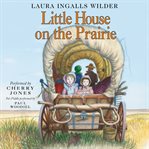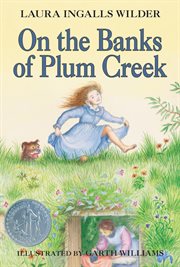Preface Some decades ago when I fit the criteria of Young Adult reader, I was Laura Ingalls. That is, when I wasn't Nancy Drew or, somewhat later, a foot-stamping Scarlett O'Hara. Laura spoke her mind, rode black ponies bareback, helped Pa with the haying, and pushed off her sunbonnet. Besides, I had the genetic creds for Laura. My mother grew up in the middle of the Illinois prairie, became a teacher, and taught in a one-room country schoolhouse, just like Laura and Ma Ingalls. Her family inspired my love of gardening and my confidence with canning jars. My father was a farm boy from Henry County, Kentucky, whose stories included the Christmas crate of oranges--the single gift shared among his family of nine--and walking to school unless the creek was too high, in which case they rode the mule. It wasn't until I was well into adulthood that I realized that the first family car of my memory, a mammoth black Hudson sedan dubbed "Old Jenny," had been named after a mule of his youth. Born in 1867, Laura Ingalls Wilder wrote a bumper crop of books for young readers. Farming, gardening, and nature were backdrops and key plot elements for every volume in the series. Originally published between 1932 and 1943, the eight novels chronicle growing up in the Wisconsin woods and on the prairies of Kansas, Minnesota, and South Dakota over a twenty-year period starting in the late 1860s. It was a coming of age story for a girl and reflected the coming of age of a nation, as homesteaders spread west from the Mississippi. Beyond history, her books were about natural history. Laura discussed weather and land forms. She observed plants and the animals that depended on them. She foraged wild berries and picked wildflowers. And long before she was a writer, Laura Ingalls Wilder was a gardener and farmer, growing food for the table and raising crops for sale. She lived the farmer's covenant with the wider natural world, tending soil, plants, and animals to sustain herself and her family. For many of us, Wilder's books introduced us to a life in and dependent on nature. Never was germination so eagerly awaited or crop failure so devastating. Her stories, predating reality TV by decades, often read like some sort of Survivor: Prairie Edition . Yet despite grasshopper plague, drought, fire, twister, and blizzard, her love of nature shines through, buoyant with optimism. Nature, in her world, is its own character, one with a definite if sometimes unstable personality. It isn't too much of a stretch to group Laura Ingalls Wilder with America's nature writers. Nature was her home, as well as little houses. Readers of her books become budding naturalists. The actions of the Ingalls and Wilder families take place in different parts of the country with different ecosystems, and the stories demonstrate the results of changes to the land. The series sows a deep appreciation for the world outside one's own door. Now that I am approaching the age at which Laura Ingalls Wilder started writing her memoir and novels, I found that exploring her works became a personal time machine. She opened a portal into my own melting pot of memory as I explored the places and plants of her life. I've organized this book in two parts. After a short prologue, "A Life on the Land" follows the trail of Wilder's plant, farm, and garden interests intertwined with her life story. If you're a Wilder fan, you will find a familiar order, as it follows the sequence of the Little House books chronologically and geographically. I urge you to read or reread them alongside. Three additional chapters cover the Wilders at Rocky Ridge Farm in Mansfield, Missouri, and the other places that her daughter, Rose Wilder Lane, gardened. The second part of the book, "Wilder Gardens," is for the traveler who wants to hop into the wagon and travel to Wilder and "wilder" gardens across America, and for the gardener--aspirational or experienced--who would like to grow the plants that Laura grew and knew, with a catalog of specifics including botanical names. And speaking of "Laura," I hope she would excuse the familiarity. In her day, even Almanzo did not address her by her first name until after they were engaged. After that, Miss Ingalls became Mrs. Wilder. But because she shared herself with so many who got to know her character first-hand, a chapter at a time, Laura is the name I will use when referring to her as a person, reserving Wilder for her professional name as a writer. Excerpted from The World of Laura Ingalls Wilder: The Landscapes of the American Frontier That Inspired the Little House Books by Marta McDowell All rights reserved by the original copyright owners. Excerpts are provided for display purposes only and may not be reproduced, reprinted or distributed without the written permission of the publisher.


